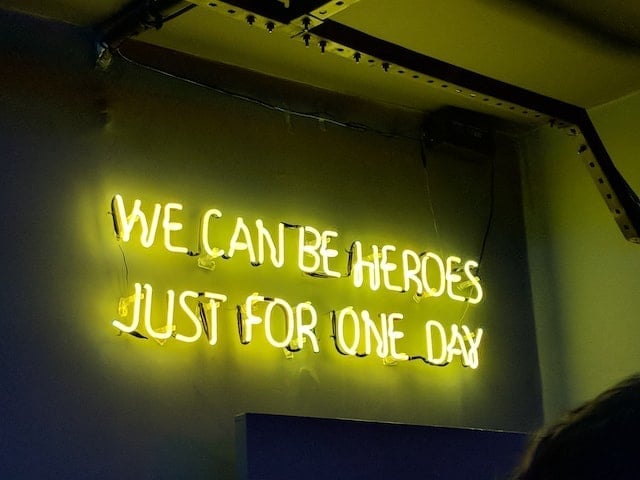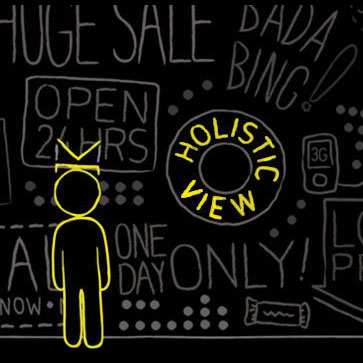The Power of the Super Bowl Advertisement Continues to Grow with Increased Digital Media Attention

Advertising has long been a mirror for American culture, but nowhere is this as evident as the history of Super Bowl commercials. Over the past half-century, the spots themselves stand as time capsules of what we thought was important, topical or funny; their tone shifts with every year in accordance with the nation's zeitgeist. Fifty years ago, in the very first game-which at that time wasn't even yet named the Super Bowl-Winston cigarettes and Haggar slacks were advertisers and the cost of a spot was between $75K and $85K. The Goodyear blimp was launched for the first time, becoming one of the most enduring forms of ambient advertising ever, so much so that we've come to think of it less as a message than part of the landscape.
On the cusp of the 70s, we saw the beginning of advertisers borrowing equity from well-known personas. It's a tactic that is now standard if not expected, but was revolutionary in 1969 when Plymouth introduced its Road Runner, licensing the famous cartoon of the same name. And it can be argued that this style of commercial first matured in 1971 in the historic shaving cream ad featuring Farrah Fawcett and Joe Namath. The sexist undertones of the spot would never fly today, nor would the message: "Let Noxema cream your face."
The 1970s also saw the rise of another time-tested tactic: the extreme product demonstration. In the wake of one of the most successful spots in history in which a gorilla tries to destroy an American Tourister suitcase (not Samsonite, as many recall), Master Lock aired its own product demonstration on the Super Bowl: a padlock that survives a bullet.
Ten years later, 1980 saw the advent of the tear-jerker spot, in the legendary Mean Joe Greene commercial where the tough linebacker accepts a bottle of Coke from a young fan, rewarding him with a jersey. Besides its emotive resonance and celebrity usage, this spot also reflects a basic shift in messaging that we take for granted today. It embodies one of the earliest and most masterful examples of story telling in a Super Bowl spot. In fact, so much so, that it spawned a TV movie. While it may seem self-evident to modern audiences, the use of a narrative arc in a commercial was a relatively new maneuver at the time: a brand leveraging a feel-good anecdote to associate emotion with product. This tactic has been repeated by advertisers ever since, perhaps most notably by Anheuser-Busch in its many spots featuring the Clydesdales.
In 1984, perhaps the very best known Super Bowl ad ever aired. Chiat/Day's commercial introducing Apple was completely unlike anything audiences had seen. The storyline was epic. The product was featured only nominally. The director (Ridey Scott) was famous in his own right. And the production values were unheard of for the time. This spot paved the way for the cinematic, over-the-top commercials to which we're now accustomed. One might even argue that it was the turning point at which some viewers became more interested in the ads than the game. The "1984" spot is also an early example of a brand positioning itself against an enemy, in this case, monotony and conformity. Curiously, this exact same messaging misfired badly in the very next year with Apple's "Lemmings" spot, which has largely (and thankfully) been forgotten. 
As the 80s drew toward a close, the tone of Super Bowl spots shifted again. Bud Light's Spuds MacKenzie spokes-dog ushered in a new era of goofiness. Many advertisers sought to develop or draft their own cartoonish equities. In 1992 Nike aired "Hare Jordan" which mixed live-action with animation as Michael Jordan and Bugs Bunny shot hoops. The very next year, Jordan returned, this time for MacDonald's, as he and rival Larry Bird competed with the most hyperbolic trick shots ever performed. In 1995, the general giddiness of Super Bowl spots hit a new peak as Budweiser abandoned its Clydesdales to experiment with its memorable croaking frogs. The brand continued to mine this vein for several years to follow, injecting weasels and iguanas into the mix. The frogs finally got fired in a 1999 spot, but the zaniness had by then escalated to new heights. In 2000, dotcoms dominated the game, featuring cat herding and a talking chimp, and purchasing nearly 20 percent of the commercial bandwidth available at an average cost of $2.2 million per spot. The very next year, that bubble had decidedly burst.
From 2000 on, many of the most time-tested recipes for Super Bowl spots were repeated with little innovation: the appeal of sex in GoDaddy's commercials, the sophomoric humor of farting horses, the created or borrowed equity of babies, dogs, chimps, bears and Betty White. But there was one notable exception in 2002, when post 9/11, the Budweiser horses paid tribute to Manhattan by kneeling. This was a prime example of a commercial perfectly reflecting the nation's somber zeitgeist. And it inaugurated a new form of messaging: the tribute spot, in which the advertiser pays tribute to anything from American troops to farmers.
In 2010, Nielsen officially acknowledged that more than 50 percent of the Super Bowl audience enjoyed the ads more than the game itself. This recognition was echoed in a spate of after-the game media interactivity, with post-game discussion of the ads and audience polling. One of the oldest ad-polling sites, spotbowl.com, now in its 14th year, capitalized on the public interest with live voting during the game and commercial commentary and analysis.
In recent years, the experts at spotbowl.com have identified a new trend in Super Bowl advertising: the extension of messaging beyond the spot itself. This trend was first evident in 2007, with Dorito's "Crash the Super Bowl" campaign, which invited users to participate in the creation of the spots itself. It continued in 2013 when one of the most significant messages wasn't in fact a commercial but a tweet, when Oreo announced "You can still dunk in the dark" during the half-time black-out at New Orleans Superdome.
With a projected cost of over $5 million per commercial, modern advertisers employ every opportunity possible to extend viewership and interaction with their spots. Whereas the content of a Super Bowl spot was once a closely guarded secret, we can expect to see numerous pre-game hype and pre-releases of this year's crop of commercials on video channels such as youtube.com. And the spots themselves will often use "hooks" to drive viewers to sites to view extended and exclusive content on microsites and social media. For the most part, the new breed of stories aired during the Super Bowl need to achieve ROI by digital overlays as well as the spots themselves. But one thing is for certain; we will continue to see some of the most impactful advertising on the planet, evolving into new forms as it reflects the culture of our times.
Michael Pavone is the president and CEO of Pavone Marketing Group, Inc., an advertising and marketing agency with offices in Philadelphia, Chicago and Harrisburg.








